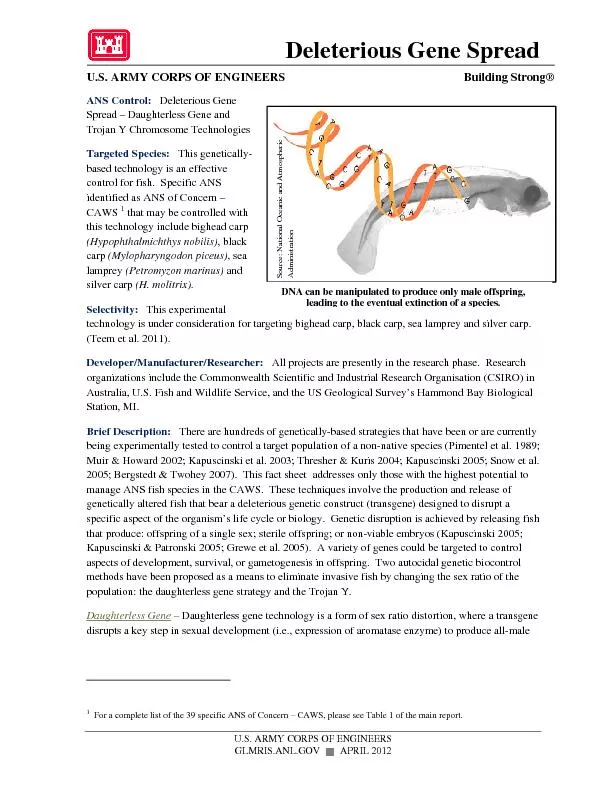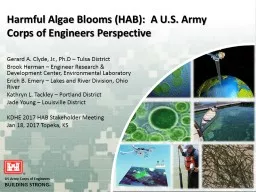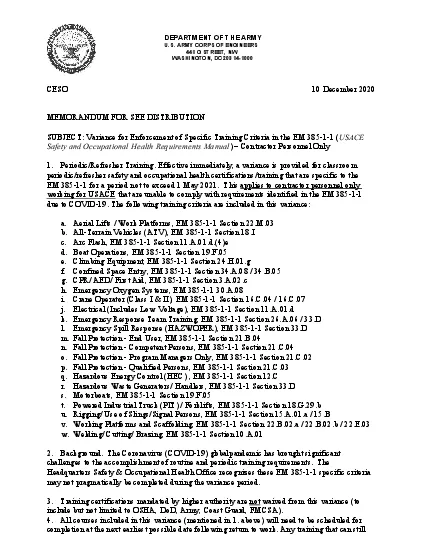PDF-U.S. ARMY CORPS OF ENGINEERS Building Strong
Author : myesha-ticknor | Published Date : 2016-11-17
GLMRISANLGOVAPRIL 2012 DNA can be manipulated to produce only male offspring leadingtotheeventualextinctionofaspecies ANS ControlSpread
Presentation Embed Code
Download Presentation
Download Presentation The PPT/PDF document "U.S. ARMY CORPS OF ENGINEERS Building S..." is the property of its rightful owner. Permission is granted to download and print the materials on this website for personal, non-commercial use only, and to display it on your personal computer provided you do not modify the materials and that you retain all copyright notices contained in the materials. By downloading content from our website, you accept the terms of this agreement.
U.S. ARMY CORPS OF ENGINEERS Building Strong: Transcript
Download Rules Of Document
"U.S. ARMY CORPS OF ENGINEERS Building Strong"The content belongs to its owner. You may download and print it for personal use, without modification, and keep all copyright notices. By downloading, you agree to these terms.
Related Documents














